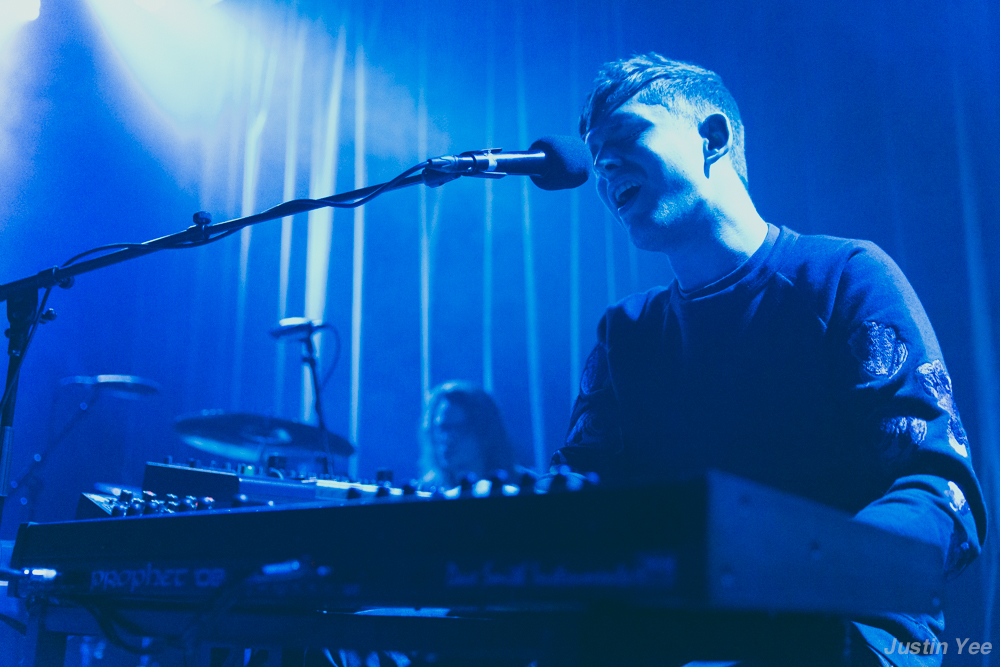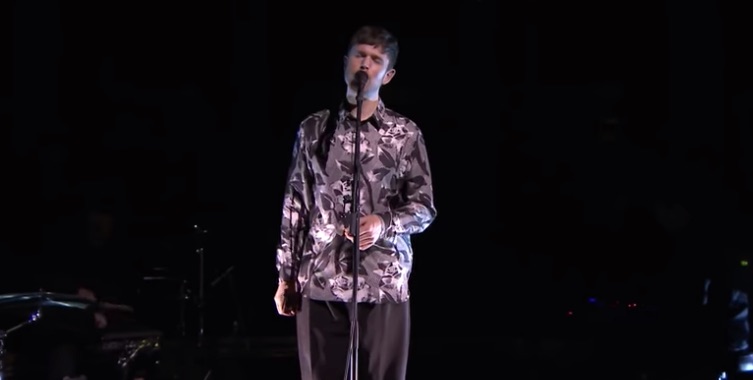Last week James Blake rolled through both San Francisco and Los Angeles and played to sold-out, tiny rooms timed around the release of a new EP called 200 Press. Justin Yee was at the show at the Chapel here in San Francisco and brought back the photos you see in this post, and Molly Gale caught the show two nights later in Los Angeles at the Roxy and brought back this writeup about the show. —Editor
There are really two opinions people have about James Blake. The first: you love him unconditionally and can’t shut up about it. The second: you don’t really get it and wish that everybody would just shut up about it. While I’ll respect personal music tastes, if you are of the second opinion – it might be best to stop reading now. What follows is an unabashed breakdown of what makes James Blake so bloody brilliant, told through the lens of his recent West Coast mini-tour where our SF team caught him on Sunday and I caught him two days later.

His sound is heavily produced, yet so fundamentally human at the same time. The disorganization of human emotion is expertly expressed with Blake’s perfectly imperfect structure and melodic style. Until you have witnessed him construct the layers live, you can’t truly respect the depth of his vision.
This is nothing like the rockstar-behind-the-computer thing we’ve seen exercised by other alt-rock outfits. Intricate looping builds a backbone while skilled improvisation feels in the meat. Blake uses more than just words and notes – he uses frequencies, he uses silence, he uses static. It’s one of those concerts that you feel just as much as you hear and see it.

On this warm Tuesday evening, the anticipation was palpable in the air as the Roxy faded to a rich blue and a powerful bass drone shook the small club. With only a 500-person capacity, these tickets had sold out in less than 10 minutes. As me and 499 other people held our breath, Blake begins with a stark cover of the Bill Wither’s classic “Hope She’ll Be Happier”. This song is so powerfully minimal—simple production and James’ strangely smooth voice. Eventually, the rest of the band joins. The low end kicks in, a subtle hip-hop backbeat fills out the instrumental and James Blake has made it his own.
“I Never Learnt To Share” is a chilling exhibition of the power of live looping, one of Blake’s fundamental techniques. Exact, precise harmonies dance together and build to arguably one of the most powerful sonic releases. Soul-shaking bass drones remind us just how intense James Blake can be. He follows this with “To The Last” – a delicate post-love song, which uses intricate layers in a more fragile, structural way. For me, this song is the moment you see somebody very special after a very long period of distance. It’s bittersweet—but sweet nonetheless.

Blake has often credited Joni Mitchell as one of his foremost inspirations, and after hearing him perform “A Case of You” – it is clear the effect she has had on him. Strange, wandering and uncontainable, their vocal tones are very similar. Their songwriting as well –so perfect in it’s imperfection. His next song, “Overgrown”, could have easily been from Mitchell’s era. It’s one of his more melodic tracks, while at the same time employing skilled restraint.
After a long block of visceral, emotional music, we needed a break and he knew it. Diving into “Life Round Here”, Blake delivered a jolt of energy to the attention-deficit LA crowd (there were plenty of #nonworthy idiots there). Cruising through the industrial, future-type-s*** tracks “200 Press” and “Voyeur”, everybody had the chance to get their wiggle on for a minute. This really lightened things up at the perfect moment. The space-jazz jam out was so real. Howling synths shook the entire room – it reminded me of a super sweet club-style alien abduction. DAMN.

And then finally the moment we had been waiting for: the haunting hummed melody began and “Retrograde” was upon us. This song is a mini-masterpiece of modern music. Complicated layering of vocal melodies and visceral electronic instrumentation combine to create something more than evocative. As the song peaks, a warm wash of gold light fills the room and my heart is full. Again with this song, Blake expresses something so intangible – the searing tension of a love that can’t be but also can’t not be. Poignant. Beautiful. There is nothing like “Retrograde”.
To close his set, Blake provides the perfect counterpoint to the tension of “Retrograde”: the light, optimistic resolution of “The Wilhelm Scream”. Airy and melodic, this ended his set on an upbeat note. This song is where it all began, to be honest. Performing live, Blake channeled the teetering jazz style of the Neville brothers. (The man’s pool of influence grows ever deeper.) Within seconds James walked back on stage to present the breathtaking encore of “Measurements” sans backing band. It was another display of genius vocal looping – highlighting the power of harmony, silent space and precision. When the harmony was eight to nine layers deep, Blake stands from the synth and walks off stage mid-refrain. Such a #boss.

It’s curious to me just what is it about James Blake that is so powerful. His music can seem frantic, aimless or abrasive if you weren’t familiar with it already, but in all of that, there is so much beauty. He uses electronic elements, and yet it oozes with the glorious imperfection of humanity. Part of his style is built around rigid control, while the rest is reliant on improvisation and jazz. Courageous and dynamic, I believe that he is one of our generation’s true musical visionaries. His music is exhilarating, almost always at it’s boiling point. We’re crossing our fingers that Blake will pop up at some festival dates — especially given the West Coast timing and Coachella announcements looming — but he’s a tough one to anticipate and this is just hopeful speculation at this point.
If you haven’t caught Blake live, I implore you to do so at the soonest possible opportunity. Consider it your New Year’s resolution.







































